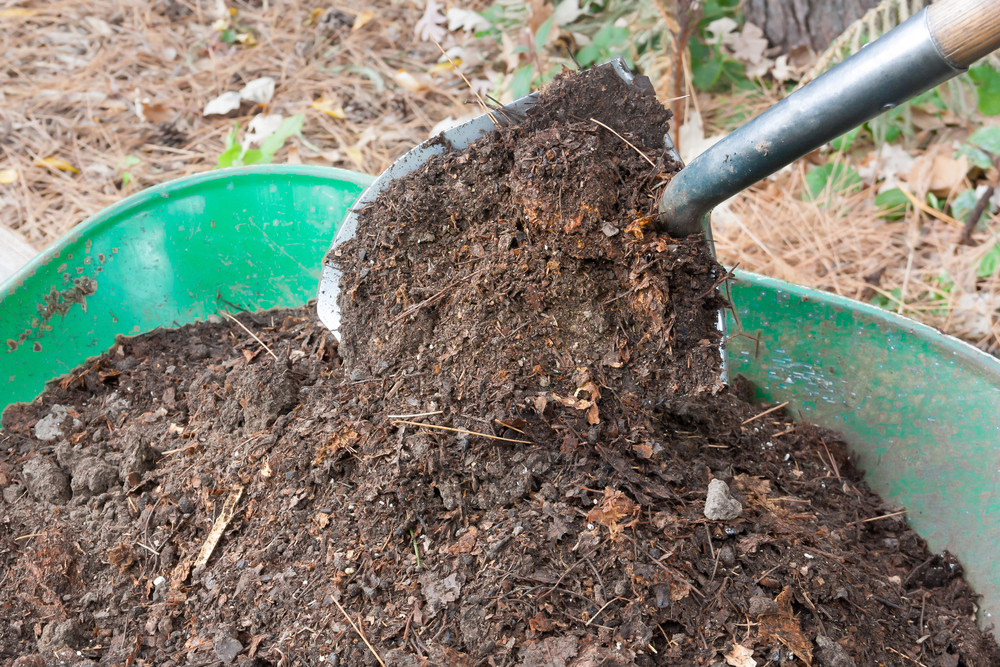You might have heard about using compost for your lawn or garden. That is a great use that is recommended to have healthy soil for plants and grass to grow. But it’s important to know the different types of compost that are available. Some composts are intended for seeds and cuttings, some for potting. Some composts contain ingredients that your plants need and some don’t. So, what are the possible ingredients in the recipes for compost? We have a few options that may be right for you:
- Peat
- Sterilized Loam
- Grit
- Coir
- Bark
- Composted Stable Manure
Peat
Peat moss is made up of partially decomposed plant material, and it is known for its ability to hold moisture and nutrients. When added to a compost pile, peat moss can help create an environment that is conducive to microbial activity, which is necessary for the breakdown of organic matter.
To use peat moss in a compost recipe, it should be added in moderation. Peat moss is acidic, so adding too much can make the compost too acidic for some plants. Additionally, because peat moss is slow to break down, it can take a while for the compost to mature. However, when used in the right amounts, peat moss can help create a well-balanced compost that is rich in nutrients and beneficial microbes.
Sterilized Loam
Sterilized loam is a soil component that has been sterilized to kill off any harmful bacteria or pests. While it is not a common ingredient in compost recipes, it can be used in small amounts to help balance the nutrient content and improve the texture of the finished compost. Loam is a type of soil that contains a balanced mix of sand, silt, and clay, making it ideal for plant growth.
When adding sterilized loam to a compost recipe, it is important to use only small amounts, as too much can create an imbalance in the nutrient content of the compost. Loam should be added to the compost pile along with other organic materials such as vegetable scraps, yard waste, and other plant matter. Over time, the compost will break down and the loam will help create a nutrient-rich soil that is ideal for plants.
Grit
Grit is a coarse material that can be added to compost recipes to improve the drainage and aeration of the finished compost. Grit can come in various forms, such as sand, gravel, or crushed rock. When added to the compost pile, grit helps create air pockets in the soil, which allows for better circulation of oxygen and water.
When using grit in a compost recipe, it is important to use the right amount. Too much grit can create a soil that is too dry and difficult for plants to grow in, while too little can result in a soil that is too dense and poorly drained. Typically, a ratio of 1:4 grit to compost is recommended. The grit should be mixed into the compost pile along with other organic materials such as kitchen scraps and yard waste.
Coir
Coir, also known as coconut coir or coco coir, is a byproduct of the coconut industry. It is a fibrous material that is used as a soil amendment and can also be added to compost recipes. Coir is a sustainable alternative to peat moss, as it is renewable and does not contribute to the destruction of wetland habitats.
When added to a compost recipe, coir helps to improve moisture retention and aeration of the soil. It is also a good source of carbon, which is necessary for the composting process. Coir can be added in small amounts to the compost pile, along with other organic materials such as vegetable scraps and yard waste.
Bark
Bark is a common organic material that can be added to compost recipes to improve the nutrient content and texture of the soil. Bark is a good source of carbon, which is an essential component of the composting process. It can come in various forms, such as shredded or chipped bark, and can be made from a variety of tree species.
When using bark in a compost recipe, it is important to use only small amounts, as too much can create a soil that is too acidic and difficult for plants to grow in. Bark should be mixed into the compost pile along with other organic materials such as vegetable scraps, yard waste, and other plant matter. Over time, the bark will add nutrients that are ideal for plants.
Composted Stable Manure
Composted stable manure is a great ingredient in compost recipes. Stable manure is rich in nitrogen and other essential nutrients that are necessary for healthy plant growth. When composted properly, stable manure can help create a nutrient-rich soil that is ideal for plants.
It’s key to use only well-aged and composted manure to prevent any potential health risks. Fresh manure can contain harmful bacteria and pathogens — very bad for health. The composted manure should be mixed into the compost pile along with other organic materials such as vegetable scraps, yard waste, and other plant matter. Your plants will love the nutrients this adds to the compost.
If you are ready to order compost and wonder what is in our recipe, please contact us and we would be happy to talk.

